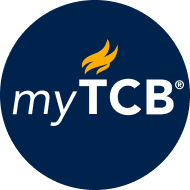
There are several publicly available sustainable procurement frameworks (e.g., AIM Progress: responsible sourcing journey; sustainable purchasing leadership council - maturity model; ISO 20400:2017- sustainable procurement standard) that provide guidance for companies to integrate sustainability consideration into procurement. These tend to be structured as progressive steps on ladders. This blog shares some of the insights from the Sustainable Procurement: Lessons from Leading Companies report. Although companies find these frameworks useful to improve their program – typically by comparing what they do against the indicators of each rung of the ladder to identify gaps – they can be used as checklists that encourage companies to focus on inputs and activities rather than outcomes. While getting the inputs right is an important step, often companies see it as their end goal. often companies fall in the trap of seeing that as their end goal. For example, review of sustainable procurement reporting of about 60 large global companies indicated that most of them have process-based indicators (e.g. fulltime employees working on sustainable procurement, suppliers who have a signed code of conduct, number of supplier workshops organized), which of course say little about actual performance and by no means are an indicator of success. Practitioners can make a start by familiarizing themselves with the Theory of Change model and explore how the principles can be applied in the sustainable procurement content. Focusing on the change you seek to achieve helps define your inputs and activities for maximum sustainability impact. The Conference Board has developed a sustainable procurement framework to help companies assess their sustainable procurement program’s orientation toward outcomes and impact. A company can make a start by reflecting on the following questions?

myTCB® Members get exclusive access to webcasts, publications, data and analysis, plus discounts to events.
80 Years of Corporate Citizenship & Philanthropy Leadership
November 27, 2023
How CEOs and Boards Can Enhance Digital Trust
April 04, 2023
Reaching Net-Zero Emissions
January 31, 2023
First 2022 Racial Equity Audit Proposals Successful
March 22, 2022
